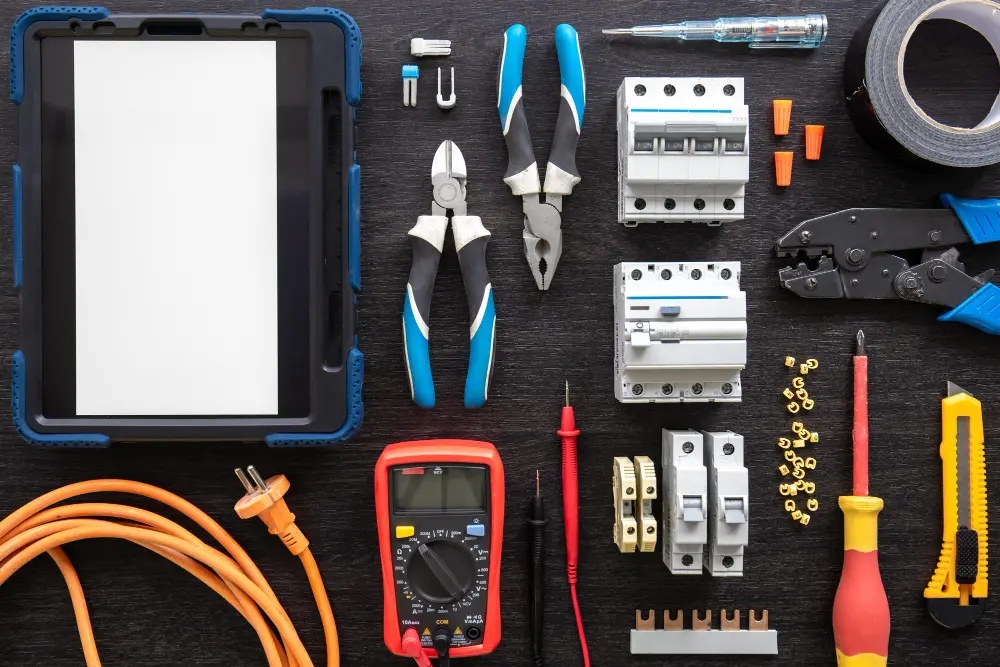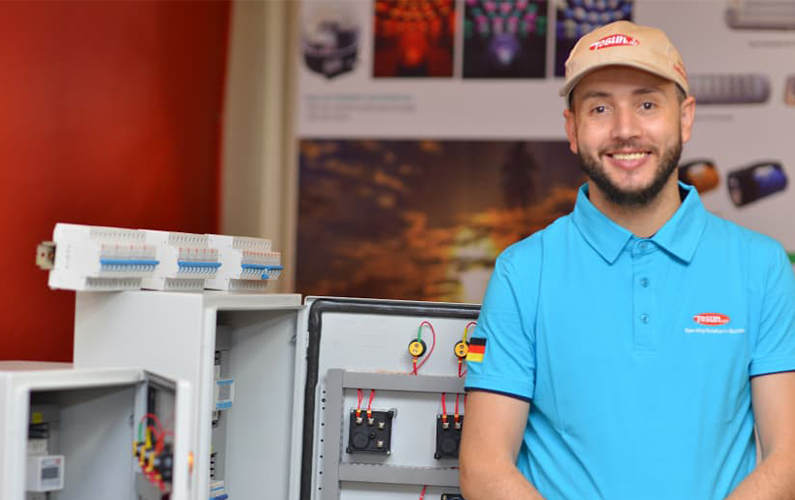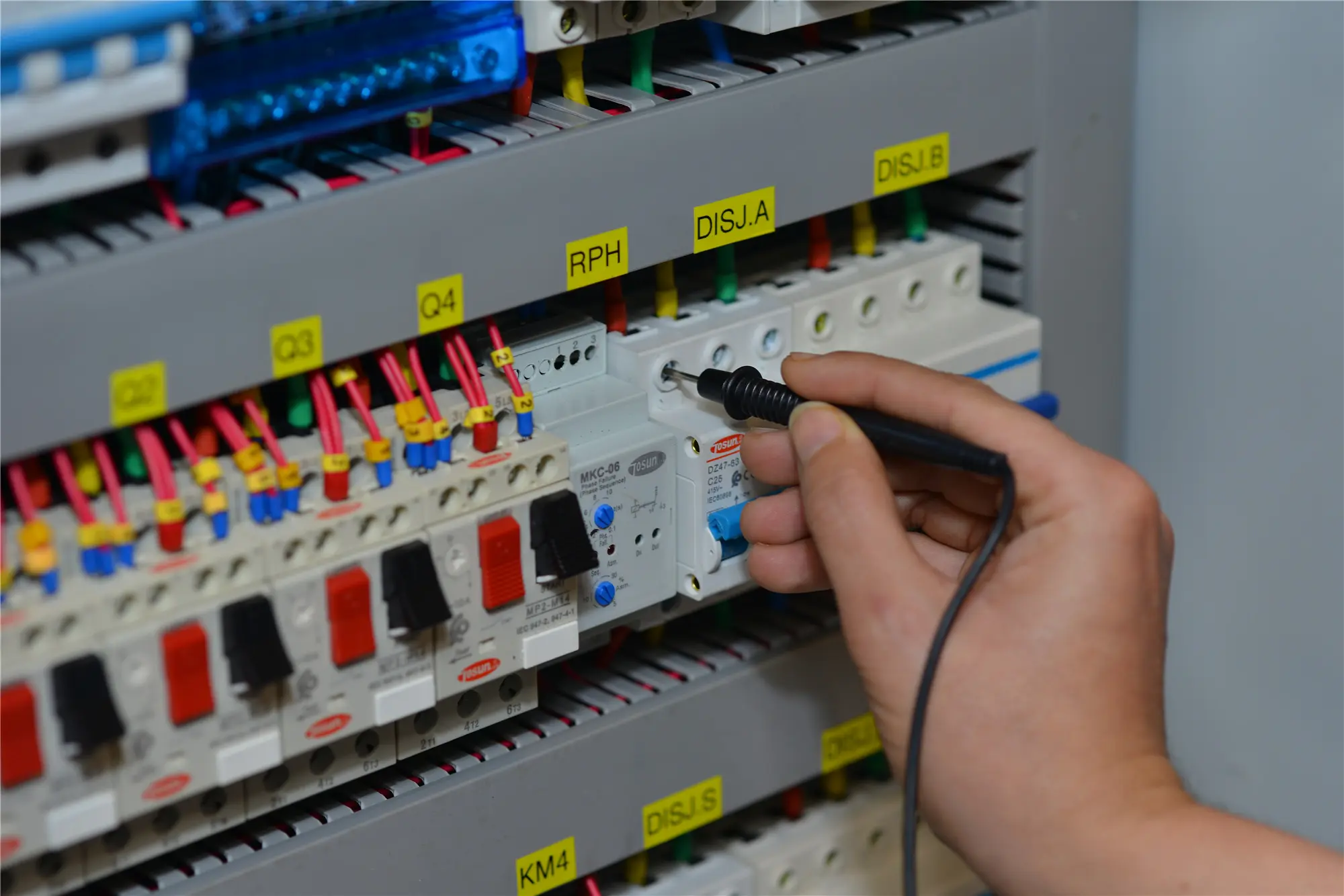การป้องกันระบบโซลาร์ PV: คู่มือฉบับสมบูรณ์เกี่ยวกับเบรกเกอร์วงจร DC/AC ฟิวส์ และ SPD
สารบัญ
สลับSolar PV system protection uses circuit breakers, fuses, and surge protectors to stop equipment damage from electrical faults. These devices keep solar systems safe and prevent expensive repairs.
Why Do Solar PV Power Systems Need Protection?
Solar panel protection prevents damage to photovoltaic systems from electrical faults and voltage surges. What does PV stand for in solar power? PV stands for photovoltaic, which converts sunlight into electricity.
The sequence of operation photovolatic system starts with solar cells making DC power. This power flows through strings and arrays to inverters that change DC to AC. Each stage needs protection.
Solar power circuit protection differs from regular electrical systems. Solar systems use high DC voltages up to 1500V with low fault current. Regular electrical devices cannot handle these conditions.
Protection devices must comply with IEC standards and prevent equipment damage from lightning strikes or electrical faults.
What Are the Main Types of Solar Circuit Protection?
Solar PV systems require DC protection for high-voltage arrays and AC protection for grid connections. Each side handles different electrical characteristics and fault types.
จุดป้องกันที่สำคัญ ได้แก่:
- String-level fuses for individual solar panel groups
- Array-level circuit breakers for combined strings
- Surge protective devices for lightning protection
- AC circuit breakers for grid-connected equipment

โตซันลักซ์ เบรกเกอร์ไฟฟ้ากระแสตรง handle up to 6000A breaking capacity for commercial solar arrays.
How Do DC Circuit Breakers Work in Solar Systems?
DC circuit breakers handle the specific requirements of solar DC circuits. These devices must interrupt DC current without the natural zero-crossing that helps AC breakers extinguish arcs.
TOSUNlux TSB5-63DC Circuit Breaker has a modular design with breaking capacity up to 6000A and rated voltage of 800V. It offers 1P, 2P, 3P, 4P configurations for different system requirements.
DC circuit breakers offer several benefits:
- Reset without replacing parts
- Built-in disconnect for maintenance
- Remote operation for system control
- Visual trip status indication
These devices pass testing per IEC60947-2 standards and require INTERTEK certification.
Why Are Fuses Important for Solar String Protection?
Solar string fuses provide protection against reverse current flow when panels are shaded or damaged. Fuse for solar energy system installations use specialized DC-rated devices that operate at low fault currents.
PV fuses have faster response times than circuit breakers for string protection. They provide higher DC breaking capacity up to 50kA and work well in temperatures from -40°C to +90°C.
Fuse benefits include:
- Lower cost per protection point
- Smaller size
- No wear over time
- Better coordination
Solar fuses must meet IEC 60269-6 (gPV) and UL 248-19 standards for reliable operation.
What Role Do Surge Protective Devices Play?
Lightning strikes can destroy unprotected solar equipment in seconds. Solar PV surge protectors divert dangerous voltage spikes to ground before they reach inverters and control systems.
TOSUNlux Solar PV Surge Protectors have CE and UKCA certifications from INTERTEK. They pass DC600V, DC800V, and DC1000V certification tests. These devices offer 2 or 3-pole configurations with a modular design.
Surge protection becomes critical when considering replacement costs for damaged inverters and monitoring equipment.
DC surge devices must handle:
- Maximum voltage above system voltage
- Expected surge current levels
- Voltage protection level for equipment
- Type 1 or Type 2 rating based on location
How Do AC Circuit Breakers Protect Solar Inverters?
AC circuit breakers on solar systems handle different loads than DC breakers. Choosing the right circuit breakers for solar PV inverter protection involves matching breaker ratings to inverter output specifications.
AC breakers must handle inverter startup currents and harmonic distortion from power conversion. Standard AC breakers work but may trip unnecessarily without proper sizing.
การ AC vs DC isolator switch choice affects maintenance procedures. AC disconnects follow standard electrical codes while DC isolation requires special arc-rated devices.
What Is Protection Coordination in Solar Systems?
String fuses must clear faults before the array breakers trip. This prevents the entire array from shutting down when only one string has problems. Without proper coordination, a single string fault can disable the whole system.

Use time-current curves to select device ratings. A 15A string fuse should clear in 0.1 seconds, while the 125A array breaker takes 1 second. This 10:1 time ratio ensures selectivity.
Coordination also requires matching with utility grid protection and rapid shutdown code requirements for first responder safety.
How Do Environmental Factors Affect Protection Devices?
Solar installations face harsh outdoor environments including temperature extremes, humidity, UV exposure, and mechanical vibration. Protection devices must maintain performance across these conditions with appropriate IP ratings.
Ambient temperature affects device performance and ratings. High-temperature locations require derating calculations to ensure safe operation within manufacturer specifications.
Environmental considerations include:
- IP65 or higher ratings for outdoor installations
- UV-resistant materials for long-term durability
- Temperature derating factors for hot climates
- Corrosion resistance for coastal environments
คำถามที่พบบ่อย
What protection is required for solar PV systems?
Solar systems need DC circuit breakers or fuses for string protection, array-level protection devices, surge protective devices for lightning protection, and AC circuit breakers for inverter output protection.
Why can’t standard circuit breakers be used for solar DC applications?
Standard AC circuit breakers cannot reliably interrupt DC current because DC circuits lack the natural zero-crossing that helps extinguish electrical arcs. Solar-specific DC devices are required.
How do I size protection devices for my solar installation?
Protection device sizing depends on solar panel short-circuit current, system voltage calculations, and conductor ampacity. Use factors of 1.25 or 1.56 times short-circuit current depending on device type.
บทสรุป
Solar systems need special circuit breakers, fuses, and surge protectors designed for DC applications. These devices handle high voltages and low fault currents that standard equipment cannot. Proper protection keeps equipment safe and meets safety codes throughout the system’s life.
โทรศัพท์: +86-577-88671000
อีเมล: ซีอีโอ@tosun.com
Skype: tosunelectric
วีแชท: +86-139 6881 9286
วอตส์แอป: +86-139 0587 7291
ที่อยู่: ห้องเลขที่ 1001 Wenzhou Fortune Center,Station Road, Wenzhou, China
ขอใบเสนอราคา
ติดต่อเราผ่าน WhatsApp
 : +86-139 0587 7291
: +86-139 0587 7291 ภาษาอังกฤษ
ภาษาอังกฤษ ภาษาสเปน
ภาษาสเปน รัสเซีย
รัสเซีย ภาษาฝรั่งเศส
ภาษาฝรั่งเศส อาหรับ
อาหรับ ภาษาโปรตุเกสของบราซิล
ภาษาโปรตุเกสของบราซิล อังการา
อังการา ตุรกี
ตุรกี โปแลนด์
โปแลนด์ เนเธอร์แลนด์
เนเธอร์แลนด์ อิตาลี
อิตาลี ภาษาอินโดนีเซีย
ภาษาอินโดนีเซีย ฮินดี
ฮินดี อัลดู
อัลดู อัมเบรลล่า
อัมเบรลล่า เชสเชียร์
เชสเชียร์ ภาษาไทย
ภาษาไทย มงโกล
มงโกล วาร์ซี
วาร์ซี ชคิป
ชคิป เอลลิก้า
เอลลิก้า


